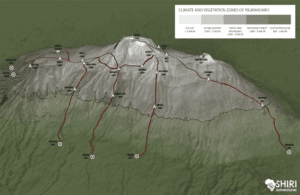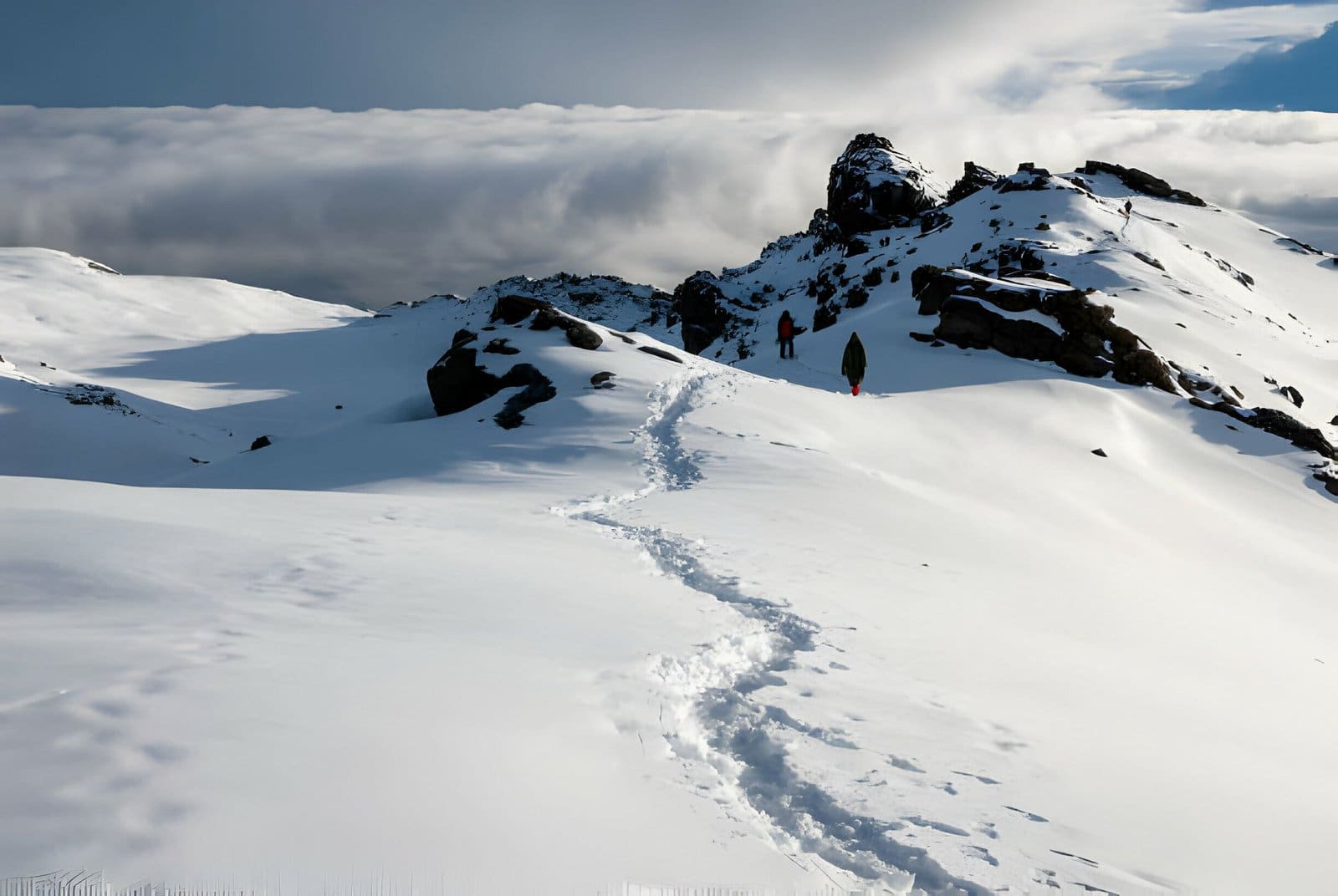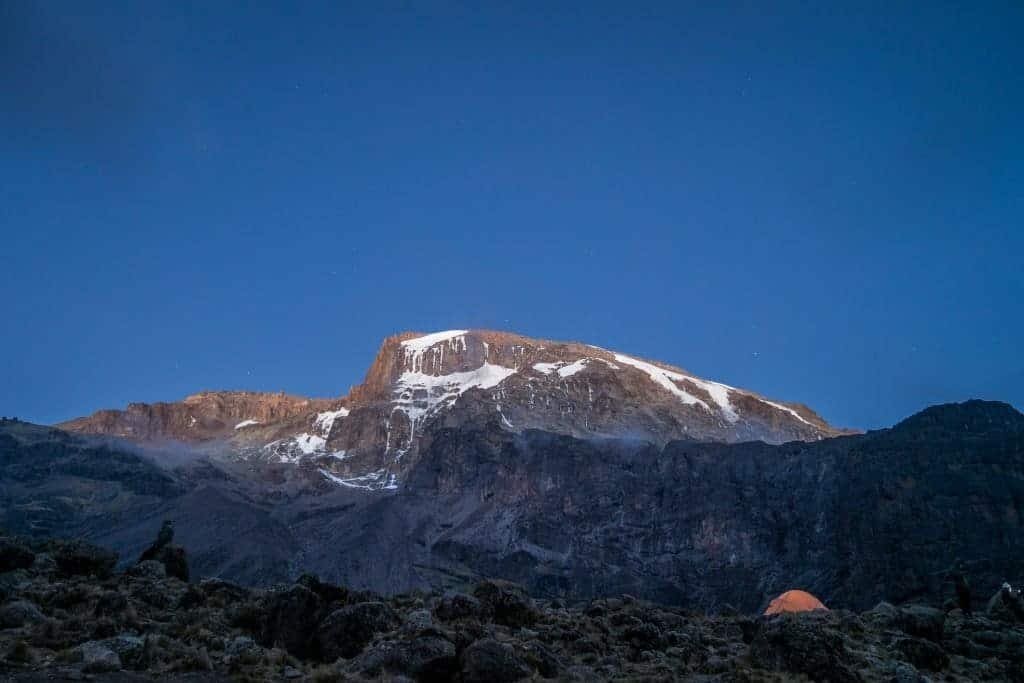Discover the 8 Main Kilimanjaro Routes: Benefits, Scenery, and Accommodations
There are 8 main routes leading up the highest mountain in Africa – Kilimanjaro. Each Kilimanjaro route offers unique benefits, from smoother acclimatization and breathtaking scenery to hut accommodations and quieter trekking experiences. In this guide, we will help you choose the ideal route for your trip.
Best Kilimanjaro Routes for Beginners | Shiri Adventures
The eight main routes to the summit of Kilimanjaro, known as the “roof of Africa,” are Lemosho (Shira route), Machame, Marangu, Rongai, Northern Circuit, Umbwe, Kilema, and Western Breach.
Each route has different itineraries. For example, the Lemosho route offers 6, 7, and 8-day variations, each with a unique acclimatization profile. While shorter itineraries may seem convenient, longer ones often result in higher success rates due to better acclimatization.
If you’re planning a Kilimanjaro climb and unsure which route or itinerary to choose, this guide will help you understand the unique advantages and disadvantages of each option.
Ever wondered how busy Kilimanjaro’s trails get? Shiri Adventures’ research revealed the overall hiker traffic intel for all popular routes in Jan-Sep 2023. This data is likely to be 98%+ accurate. We’ve added the numbers for each route, including variations, to the list below.
Here is a list of available Kilimanjaro routes along with our insights:
Choosing the Best Path for Your Climb
The Lemosho Route is renowned for its stunning scenery and excellent acclimatization profile. Originally a quieter path, it has gained popularity over the years. The 6 and 7-day Lemosho itineraries, sometimes called the Shira route, begin at a high-altitude drop-off point (3,407 m/11,177 ft), accessed by an off-road vehicle. This early elevation jump-starts acclimatization by allowing more nights on the mountain.
Known as the “Whiskey Route,” Machame is the most popular path on Kilimanjaro. It offers breathtaking views and robust acclimatization. Starting at Machame Gate on the southern slope, the route begins in a tropical forest and traverses various climatic zones, ending in the Arctic desert zone at the summit. The trailhead is only 20 minutes from our climbing base at Aishi Machame Hotel.
The “Coca-Cola route” is another highly frequented Kilimanjaro path and the only one providing overnight stays in huts with dormitory-style accommodation. The Marangu route starts at Marangu Gate on the southeast of the mountain and ascends to the summit, returning via the same trail.
Rongai is the only route starting from the northern slope, offering an off-the-beaten-path experience ideal for climbing during the rainy seasons. It passes Mawenzi, one of Kilimanjaro’s volcanic cones, and provides unique perspectives. The return journey through Marangu offers views of both sides of the mountain, and this route is a great choice if you want to avoid the Barranco Wall.
The Northern Circuit is the longest Kilimanjaro route, allowing climbers to enjoy a quiet trek and witness the mountain from all sides. Sharing the trailhead with the Lemosho route, it receives only 5% of Lemosho’s traffic. It’s recommended for those seeking extended trekking experiences in remote wilderness with minimal crowds and a gradual slope.
Umbwe is one of the shortest and least crowded routes initially. The 6-day variation is designed for experienced high-altitude trekkers, while the new 7-day itinerary is suitable for fit beginners. The first two days are quite challenging, but the subsequent trek becomes more manageable.
Kilema is the exclusive mountain bike trek on Kilimanjaro, running parallel to the Marangu route and converging with it at the Horomobo Huts Camp. Though not widely known, we are happy to organize specialized expeditions for true mountain biking enthusiasts.
This rarely used path is a shortcut to Kilimanjaro’s summit, known for the real danger of rockfalls, making it less navigated and only attempted by a few operators who know the route well.
Kilimanjaro’s routes are interconnected. For example, Rongai and Northern Circuit meet at School Hut Camp. Lemosho, Machame, and Umbwe converge at Barranco Camp and continue as one route to the summit via the Barranco Wall.
Choosing the right route depends on your preferences, experience, and acclimatization needs. Each path offers unique challenges and rewards, making Kilimanjaro a versatile adventure destination.
The main difference between the Umbwe and Machame routes lies in the first two days of the trek. Here’s a closer look:
Umbwe Route:
Machame Route:
While Umbwe is more challenging initially, the advantage is fewer crowds during the first two days.
This free packing list for Kilimanjaro describes the gear required for a Kilimanjaro hike, along with our expert recommendations.






If you’re looking for a quick answer, the Lemosho route is the favorite among both the Altezza Team and our clients. Here’s why:
Lemosho Route
For those seeking a more private experience, we recommend the 7-day Rongai route itinerary. Although it’s not as scenic and lacks the impressive fauna like Dendrosenecio kilimanjari, it is significantly less crowded.
Rongai Route

The primary challenge on Mount Kilimanjaro is the altitude, not the steepness or length of the daily hikes. Therefore, routes with the best acclimatization profiles can be considered the easiest. Among these, the Lemosho 7-8 day route, the Rongai 7-day route, the Machame 7-day route, and the Northern Circuit are top contenders.
Lemosho Route (7-day itinerary):
Rongai Route (7-day itinerary):
Machame Route (7-day itinerary):
Northern Circuit:
Customization Options:
Choosing the right route depends on your fitness level, trekking experience, and preference for crowd size. However, the Lemosho, Rongai, and Machame routes are generally easier for beginners and offer a higher chance of summiting successfully.
According to Shiri Adventures’ statistics, the 7 and 8-day Lemosho routes boast the highest summit success rate at about 98%. The vast majority of climbers who embark on these Lemosho itineraries make it to the top.
Why Does Lemosho Have the Highest Success Rate?
While Lemosho stands out, most Kilimanjaro itineraries that last 7 days or longer also have high summit success rates due to similar acclimatization benefits.
Important Note on Success Rates:
Summit success rates can vary significantly between operators. Here’s why:
At Shiri Adventures, we pride ourselves on our commitment to excellence, offering a proven summit success rate of up to 98% on routes like the 7 and 8-day Lemosho itineraries.
The Rongai and Northern Circuit routes are renowned for having the least crowds. Additionally, the first days on the Umbwe route offer serene landscapes without the hustle and bustle of large hiking groups.
Tips to Avoid Crowds:
During these times, the weather conditions remain favorable, but the number of climbers on the trails is significantly reduced.
The safest routes on Kilimanjaro are those with excellent acclimatization profiles. These routes allow your body to adjust gradually to the altitude, minimizing the risk of altitude sickness. Popular safe routes include the 7 or 8-day Lemosho, Rongai, and Northern Circuit routes due to their well-designed itineraries that promote gradual ascent.
Key Factors for Safety:
Dangerous Routes:
For a safe and successful Kilimanjaro climb, choosing a reputable operator with experienced guides and well-planned itineraries is essential. At Shiri Adventures, your safety is our top priority.
For beginners, it’s crucial to select a Kilimanjaro route that offers good acclimatization to maximize the chances of reaching the summit safely and comfortably. However, budget tour operators often promote the 5-day Marangu route and the 6-day Machame route because they require fewer climbing crew members and supplies, and park fees are lower. While these routes may be cheaper, they come with significant challenges:
Routes to Avoid:
Key Issues:
Better Alternatives:
For beginners, consider routes with longer itineraries that include rest days for acclimatization:
These routes provide gradual ascent profiles, which are crucial for acclimatization and increasing your chances of a successful and enjoyable climb.
For more detailed information, watch our short video below.
Imagine what you want your Kilimanjaro climb to be. Are you a photographer seeking the perfect shot and the most scenic route? An experienced climber looking for a new challenge? Or a parent with teenage children wanting a smooth route with excellent acclimatization?
No matter your goals, we’ve got you covered! Our Shiri Adventures team has created eight questions to guide your choice. Consider these questions below, taking notes or crossing out routes that don’t meet your expectations.
By the end, you’ll likely decide on one or two routes perfectly suited to your dream Kilimanjaro adventure. Let’s begin!
Consider your answers to these questions. Match your preferences to the routes’ unique features. This will help you identify the best Kilimanjaro route for your expedition, ensuring a memorable and successful climb.
Embark on your journey with confidence, knowing you’ve chosen the perfect path to the summit!

We hope that this guide has provided valuable insights into Mount Kilimanjaro routes and helped you choose the perfect one for your dream expedition!
Still have questions? Feel free to reach out to our Kilimanjaro experts for personalized advice. You can also explore our YouTube channel, TripAdvisor page, and Shiri Adventures blog, where you’ll find dozens of articles covering everything related to Kilimanjaro.
Embark on your journey with confidence, and may your Kilimanjaro adventure be filled with awe-inspiring moments and unforgettable experiences!



© 2024 Shiri Adventures
Our team is always here to help